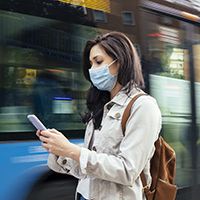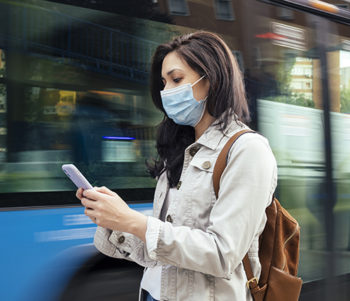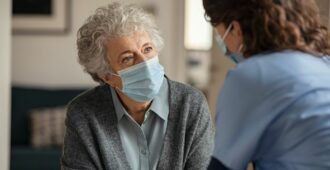
A team from the Sax Institute has published independent COVID-19 modelling that projects a second wave but finds new cases could be slashed by over 50% if enough people use the COVIDSafe app and remaining issues with it are resolved.
While social distancing and high rates of testing remain the best ways to limit the spread, the Sax Institute researchers behind the modelling say the smartphone app could be “insurance” against reignition of the pandemic.

The modelling, published in the Institute’s peer-reviewed journal Public Health Research & Practice, uses evidence on factors such as the speed and characteristics of the virus’s spread to project likely consequences for case numbers under various scenarios.
The ‘baseline’ scenario assumes a 50% monthly decline in social distancing and a 5% monthly drop in testing intensity going forward – the authors’ estimate of what was happening in May when the paper was written. Their model finds that if 61% of the population in this scenario downloaded the COVIDSafe app onto their phones, the number of infections in a second wave would be 55% lower than if there were no app.
In contrast, the current app uptake level (27%) would have a much smaller effect, resulting in only 24% fewer cases between April and December 2020, the modelling shows.
The research team, led by Dr Danielle Currie, Senior Simulation Modeller, and Dr Michael Frommer, Senior Adviser, say the potential alternative to an effective response centred on social distancing, testing and contact tracing assisted by the app is that “restrictions on travel and social interaction…may need to be re-introduced”.
Dr Frommer said the model projections should be a clarion call for state and federal governments to redouble their efforts in promoting the app to the public as well as ensuring that any lingering technical issues are swiftly resolved.
“Testing and social distancing will exert the biggest influence on controlling the curve of the second wave, but the tracking app can play a very important role,” he said.
“At our current uptake levels, the app will help with contact tracing, but not significantly. What our work shows is that if we can push uptake to around three-fifths of the population, then it will make a huge difference. It would halve the number of people getting COVID-19 in the event of a second wave and decrease the death rate as well.”
The study involved an extensive literature review of the epidemiology of COVID-19, case-finding practices and factors that could affect the uptake of the app, and finally the development of a robust system dynamics model based on the behaviour of the virus and its interaction with social, behavioural, and policy factors, using pandemic data from Australia and across the world. The model projects the number of people infected by the virus through to the end of the year. It can be adjusted to account for different rates of testing, intensity of social distancing and uptake of the tracking app.
The paper has been making waves in the media and policy circles, with reporting from the ABC, SBS News and an Op Ed in the Age and Sydney Morning Herald. It has been referenced by Federal Minister for Government Services Stuart Robert as well as Deputy Chief Medical Officer Dr Nick Coatsworth.
The modelling study is part of a special themed issue of Public Health Research & Practice on the public health lessons we are learning from the COVID pandemic.
Click here to read the COVID-19 modelling paper, and here to access the other papers in the latest issue of PHRP.
Find out more about the Sax Institute’s modelling work here.





